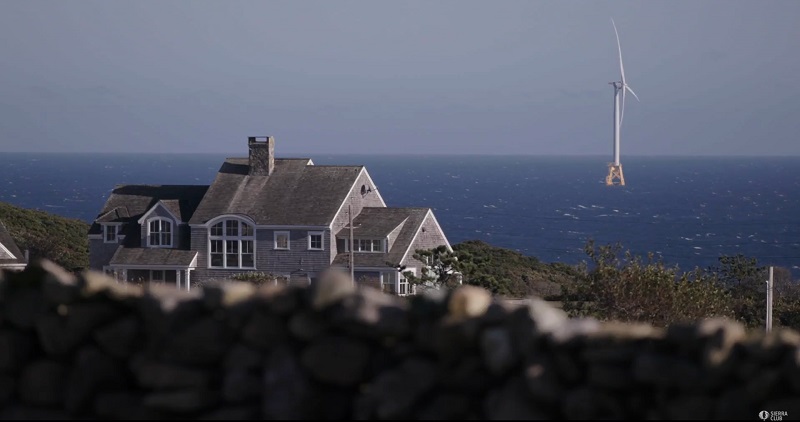By Erin Carey
Director of Coastal Programs
As renewable energy gains an ever-stronger share of the United States' energy market on land, it's notable that the offshore wind sector is small - especially in the Southeast, despite significant promise for development in the environment off North Carolina's coast.
 That may change, thanks to a three-state pact signed this week.
That may change, thanks to a three-state pact signed this week.
North Carolina's Gov. Roy Cooper, Gov. Ralph Northam of Virginia and Maryland Gov. Larry Hogan announced on Thursday a collaboration between the three states to promote the Southeast and Mid-Atlantic region for offshore wind projects.
The potential for developing offshore wind in the Mid-Atlantic is significant. According to the U.S. Department of Energy, the Atlantic Coast offshore wind project pipeline will support 86,000 jobs, $57 billion in investments, and provide up to $25 billion in economic output by 2030.
The new Southeast and Mid-Atlantic Regional Transformative Partnership for Offshore Wind Energy Resources (SMART-POWER) has a broad goal of streamlining offshore wind resources in the region. This includes increasing the offshore wind supply chain (development, construction, operation, and maintenance) and infrastructure (turbine, generators, foundations, and other component parts), and ensuring that the appropriate workforce and logistical support is in place.
There's currently only one commercial offshore wind project in the U.S., the Block Island Wind Farm, a 30 MW project with five turbines located three miles off Block Island, Rhode Island. (The Block Island facility is pictured above in the 2018 Sierra Club-produced documentary, Reinventing Power.) It came online in December 2016. But the new Mid-Atlantic wind energy partners aren't far behind.
North Carolina
North Carolina has exceptional offshore wind energy potential. A 2017 report from the U.S Department of Energy's National Renewable Energy Lab (NREL) says the state has more offshore wind potential than any other on the Atlantic Coast. The Bureau of Ocean Energy Management (BOEM) has identified several areas off the coast of North Carolina particularly suited for offshore wind facilities: Kitty Hawk, Wilmington-West, and Wilmington-East. The NREL map shows mean annual wind speeds at 7 meters per second and greater than 90 meters height within 50 miles of the North Carolina coast.
BOEM held a lease auction in 2017 for the 122,405-acre Wind Energy Area (WEA) 24 nautical miles off the coast of Kitty Hawk. The lease was awarded to Avangrid Renewables, owner and operator of North Carolina's first land-based wind farm, near Elizabeth City. The lease area has the potential to generate 2,500 MW and construction could begin as early as 2024. The N.C. Department of Commerce recently announced creation of a team to work with a UK-company, BVG Associates, to develop North Carolina’s offshore wind industry supply chain and infrastructure analysis.
Maryland
Maryland’s offshore wind progress has a longer history. In November 2016, Deepwater Wind and U.S. Wind Inc. submitted two proposed offshore wind projects, amounting to 368 MW of total capacity. Both projects were approved in May 2017 to receive offshore wind renewable energy credits. Maryland has also funded research for scientific understanding of the mid-Atlantic Outer Continental Shelf.
Virginia
Virginia’s Clean Economy Act includes a 5.2-gigawatt offshore wind target for 2034, putting Virginia behind only New York and New Jersey in offshore wind mandates. Currently, Dominion Energy and Ørsted have partnered on a 12 MW Coastal Virginia Offshore Wind demonstration project more than 20 miles off the coast of Virginia Beach. The project recently was deemed ready to begin delivering clean energy to Virginia customers.
As Mid-Atlantic states create the infrastructure for offshore wind energy to succeed – developing the manufacturing supply chain, the workforce, and supportive state policies offshore - wind developers and supply chain companies will take notice.
North Carolina, Maryland and Virginia have deep water ports, research universities, and the workforce for offshore wind projects to grow and succeed. The three states' leaders recognize that this industry will drive economic development and job creation at the same time it helps to reduce the emission of greenhouse gases.
Rather than trailing in the most promising area of renewable power, with this partnership our region can instead become a leading light for clean energy, clean air and economic growth.